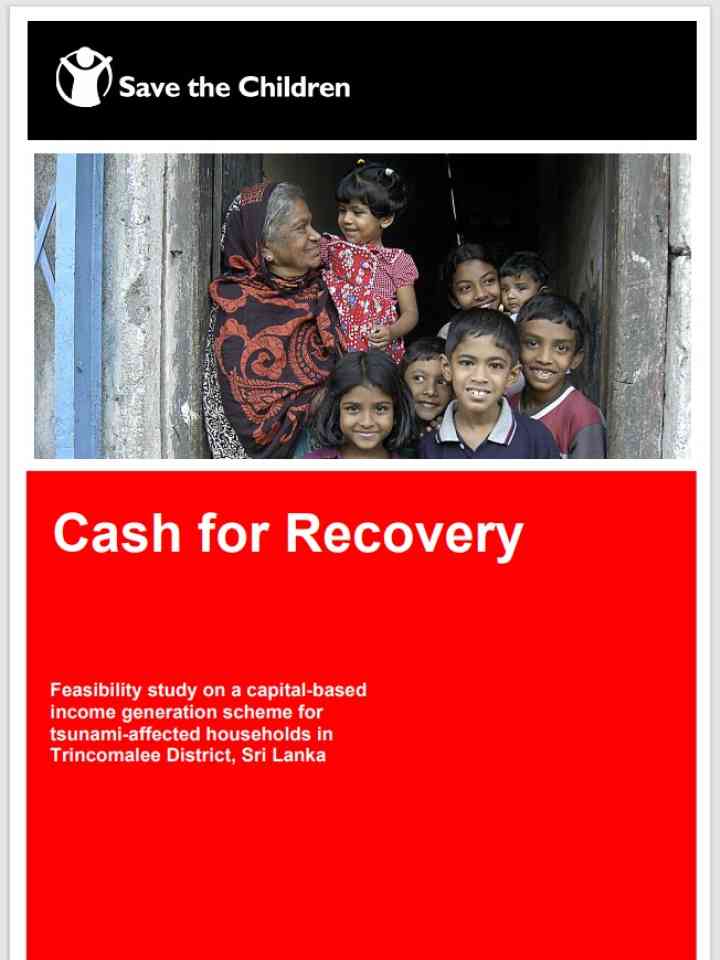Cash for Recovery: Feasibility study on a capital-based income generation scheme for tsunami-affected households in Trincomalee District, Sri Lanka
The Government of Sri Lanka (GoSL) has provided tsunami-affected households with unconditional cash transfers of Rs200 ($2) per person per week throughout 2005. The same households received World Food Programme (WFP) food rations worth Rs130 per person per week. The GoSL also provides conditional capital transfers to families whose houses have been destroyed or damaged. At the same time, aid agencies implement cash-for-work (CfW) programmes and livelihood recovery programmes. In-kind grants to replace lost income-earning assets, and to a lesser extent conditional cash grants, combined with training are the main instruments used to support livelihood rehabilitation.
In 2006 the GoSL cash transfers and the WFP food rations were discontinued. For poor households that have not yet recovered this will create a shock. In order to compensate for the loss of transfer income they will have to rely on finding employment in the labour market, on CfW programmes and on self-employment. Given that the labour market is recovering and that aid agencies offer numerous programmes supporting self-employment, it can be assumed that tsunami-affected households with unemployed or underemployed human capital, will in some way be able to earn sufficient income to meet their basic needs.
The situation is different for households with no or little employable human capital. About 10 per cent of the tsunami-affected households are extremely poor and at the same time labour scarce. These are households headed by widows who have children to care for, or headed by elderly or disabled people or by children. These households cannot benefit sufficiently from job opportunities or labour-based programmes like CfW or business promotion programmes. Once the GoSL and WFP transfers are discontinued, these high dependency ratio households will not be able to meet their most basic needs.
Existing safety net programmes (Samurdhi and the Public Welfare Assistance Allowance - PAMA) are ineffective. Half of the poorest households are not reached by any safety net programme (low effectiveness of targeting). For the other half, the value of the monthly transfers is, on the average, less than Rs100 ($1) per person. Neither GoSL nor the aid agencies implement or plan programmes that meet the needs of the ten per cent most vulnerable households. About 50 per cent of the members of these households are children.
Explore further
